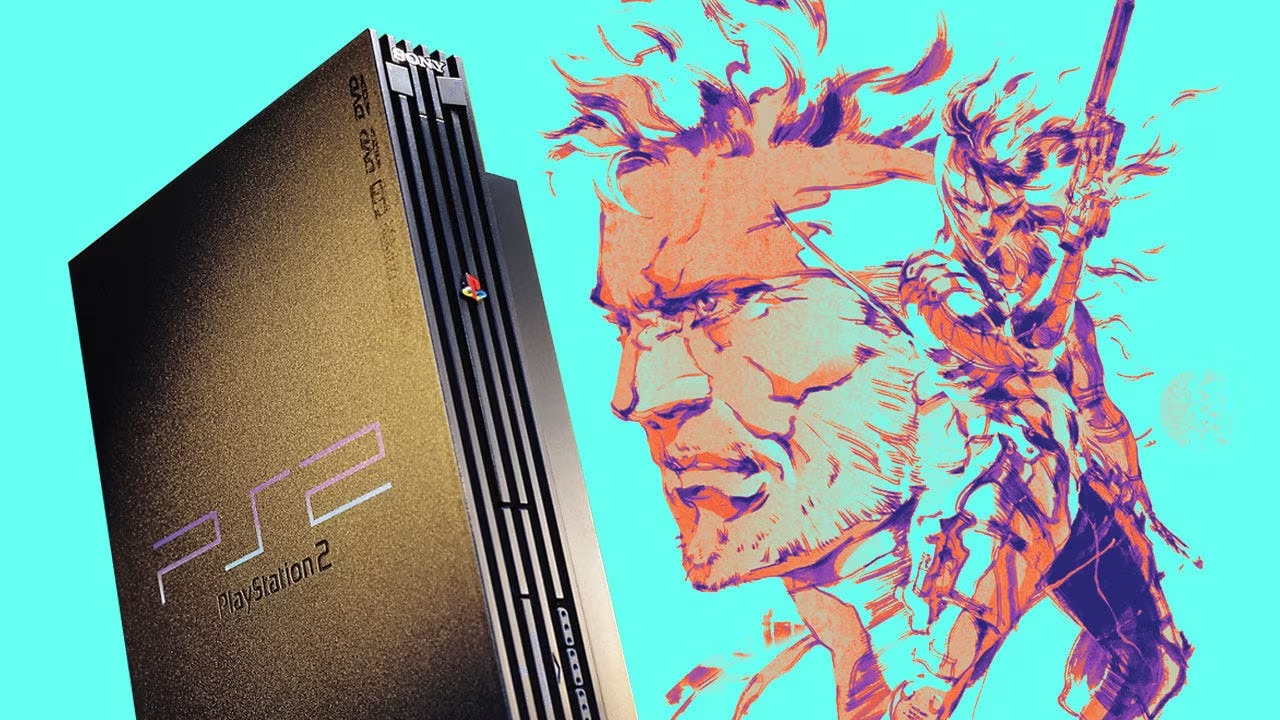The Console That Defined a Generation: Celebrating 25 Years of the PS2

As the calendar turns to 2025, the gaming world marks the 25th anniversary of the launch of the PlayStation 2 (PS2). More than just a console, the PS2 became a cultural phenomenon, ultimately securing its place as the best-selling video game console of all time, moving over 155 million units globally.
But its legacy extends far beyond sales figures. Industry experts often point to the PS2 era as the definitive turning point for modern video games, arguing that it was “really the beginning of narrative-driven gaming.” This shift fundamentally changed player expectations, moving the medium away from arcade-style high scores and toward deep, cinematic, and character-focused storytelling that defines the AAA landscape today.
The Transition from Arcade to Epic
Before the PS2, console gaming narratives were often secondary to gameplay mechanics. While the 16-bit and 32-bit eras introduced complex lore, the PS2, as a sixth generation console, provided the processing power and storage capacity necessary to deliver stories with the scope and production values previously reserved for Hollywood.
This transition was fueled by two critical factors: technical capability and consumer accessibility.
The Multimedia Advantage: The DVD Player
Crucially, the PS2 was one of the first affordable consumer electronics devices to include a DVD player built-in. This feature was a game-changer, driving massive adoption among non-traditional gamers simply looking for a cheap DVD solution. This expanded installed base meant developers had a vast, receptive audience willing to invest time in longer, more complex experiences.
The Rise of the Cinematic Presentation
With the shift to DVD-ROM storage, game developers were no longer constrained by the limited capacity of cartridges or CDs. This allowed for the inclusion of massive amounts of data, including high-quality voice acting, orchestral scores, and, most importantly, long, non-interactive cutscenes.
These cinematic sequences were vital. They allowed developers to control pacing, build tension, and develop character relationships in ways that were previously impossible, effectively turning games into interactive movies.
Defining the Narrative Revolution: Key Franchises
The PS2 library is a testament to the power of storytelling, featuring titles that pushed the boundaries of what consumers expected from a video game plot. Several key franchises solidified the console’s reputation as the home of deep narrative.
Metal Gear Solid 2: Sons of Liberty
Hideo Kojima’s work on the PS2 redefined the relationship between player and narrative. Metal Gear Solid 2: Sons of Liberty (2001) was notorious for its extensive, often philosophical, cutscenes and complex, meta-narrative structure. It challenged players with themes of identity, information control, and post-truth reality, demanding attention to detail and patience that was unprecedented in mainstream gaming.
God of War
Before Kratos became a father figure in Norse mythology, the original God of War (2005) established a new standard for epic, character-driven revenge stories. The game’s narrative was brutal, visceral, and deeply personal, focusing entirely on Kratos’s tragic past and his quest for vengeance against the Greek pantheon. It proved that action games could carry the weight of classical tragedy and mythic scale.
Grand Theft Auto: San Andreas
While previous entries in the series were successful, Grand Theft Auto: San Andreas (2004) elevated the open-world genre by integrating a sprawling, intricate narrative with unprecedented player freedom. The story of Carl “CJ” Johnson was a complex tale of loyalty, betrayal, and social commentary set against the backdrop of 1990s Los Angeles. It demonstrated that massive, non-linear worlds could still support compelling, character-focused arcs.

“The PS2 gave developers the canvas they needed to paint truly epic stories. It wasn’t just about better graphics; it was about the space to breathe life into characters and worlds,” noted one industry veteran.
The Enduring Legacy of the PS2
The narrative focus established during the PS2 era became the blueprint for the entire industry. When the seventh generation of consoles arrived (Xbox 360, PS3), the expectation was firmly set: games must offer a compelling, cinematic story alongside engaging gameplay.
Setting the Standard for AAA Development
The PS2 normalized several development practices that are now standard in high-budget, or AAA, gaming:
- High Production Values: Full voice acting, motion capture, and orchestral scores became expected, not exceptional.
- Character Depth: Protagonists moved beyond simple avatars to complex, flawed individuals with defined motivations and arcs.
- Story Pacing: The integration of non-interactive sequences to manage narrative flow became a core design tool.
- Genre Blending: Games like Grand Theft Auto successfully blended driving, shooting, and role-playing elements to serve the larger narrative structure.
The Console War and Narrative Focus
The success of the PS2 forced its competitors to adapt. Microsoft, entering the console market with the original Xbox, quickly realized the necessity of securing exclusive, narrative-rich titles like Halo to compete. Nintendo, while maintaining its focus on innovative gameplay, also began integrating deeper story elements into franchises like The Legend of Zelda.
Today, whether it’s the sprawling epics of The Last of Us or the character studies in Red Dead Redemption 2, the foundations of modern gaming storytelling can be traced directly back to the breakthroughs achieved on the PS2.
Key Takeaways: The PS2’s Narrative Impact
The PlayStation 2’s quarter-century milestone is a reminder of its transformative role in the evolution of interactive entertainment. Its impact can be summarized by these critical points:
- Best-Selling Console: The PS2 sold over 155 million units, providing an unprecedented audience for complex narratives.
- DVD Integration: The built-in DVD player drove mass market adoption, expanding the definition of who a “gamer” was.
- Cinematic Shift: It allowed developers to move from simple plots to complex, character-driven stories using extensive cutscenes and high production values.
- Defining Franchises: Games like Metal Gear Solid, God of War, and Grand Theft Auto: San Andreas established the template for modern AAA narrative design.
- Industry Standard: The PS2 set the expectation that high-budget games must prioritize compelling, cinematic storytelling, a standard that persists today.
Conclusion
The PlayStation 2 didn’t just sell hardware; it sold the idea that video games could be a powerful vehicle for storytelling, rivaling film in scope and emotional depth. Twenty-five years later, the narratives forged on the PS2 continue to influence every major release, confirming its status not just as a successful console, but as the true birthplace of modern narrative-driven gaming.
Original author: Samuel Horti
Originally published: November 24, 2025
Editorial note: Our team reviewed and enhanced this coverage with AI-assisted tools and human editing to add helpful context while preserving verified facts and quotations from the original source.
We encourage you to consult the publisher above for the complete report and to reach out if you spot inaccuracies or compliance concerns.

